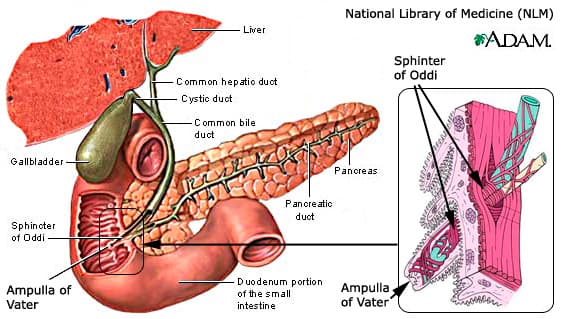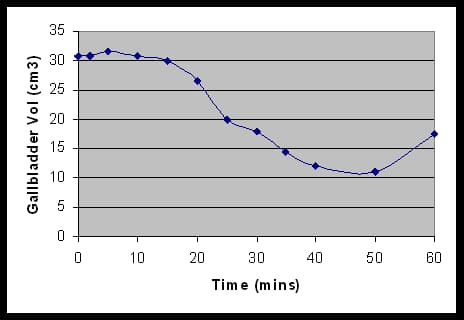Epsom salts, chemically known as magnesium sulphate, are a popular component in liver flush protocols due to their ability to stimulate gallbladder contraction, relax the sphincter of Oddi, and promote bile flow.
This article delves into the science and mechanisms behind Epsom salts' effects on liver flushes, shedding light on the benefits and optimal usage.
What are the Epsom Salts?
Epsom salts are a hyperosmotic saline laxative that typically act within a range of 1-6 hours. However, this time frame may vary from 3 to 12 hours, or even up to 24 hours, depending on an individual's transit time through the small intestines. Epsom salts contract the gallbladder, relax the sphincter of Oddi, and increase gastric, intestinal, and pancreatic secretions, as well as the production of cholecystokinin.

Magnesium sulfate (MgSO4) is composed of 9.7% magnesium bound to sulfur. It is not absorbed into the body but instead attracts water in the colon, functioning as a laxative.
If you are struggling to find Epsom salts for a laxative solution. Take a look at some of the dry fasting club protocols and you should be able to find links to different items in the protocols.
The Role of Epsom Salts: A Hyperosmotic Saline Laxative
Epsom salts serve as a hyperosmotic saline laxative, pulling water into the intestines from the bloodstream and promoting bowel movements. This flushing or laxative action can vary between 1-6 hours or even up to 24 hours, depending on the individual's transit time through the small intestine.
In the case of Epsom salts, magnesium is the active solute ingredient and water is the solvent. This excessive fluid then provides a flushing or laxative action within the intestines. There may be a loss of electrolytes as salts are carried across the intestinal membrane into the gut.
Cholecystokinin: A Key Hormone for Gallbladder Function
Epsom salts stimulate the production of cholecystokinin, a hormone that triggers gallbladder contraction and relaxation of the sphincter of Oddi, allowing bile to flow into the duodenum. Cholecystokinin also increases gastric, intestinal, and pancreatic secretions, contributing to better digestion.
The Sphincter of Oddi: Regulating Bile Flow
The sphincter of Oddi is a muscular valve controlling bile flow from the gallbladder into the duodenum. When Epsom salts are consumed, they induce relaxation of the sphincter, enabling bile to pass through and facilitating liver cleansing.
Epsom Salts and Intestinal Transit: Impact on Fasting and Fed States
Research has revealed that Epsom salts can accelerate intestinal transit in both fasting and fed states.
In the fed state, Epsom salts activate the ileal brake mechanism, inhibiting gallbladder emptying and promoting peptide YY release. This is why it's crucial to consume Epsom salts during a liver flush when the stomach and small intestine are empty.
Trials of using Epsom salts with and without food have shown that it had the following effects:
-
Significantly accelerated the transit time from the duodenum to the ileum.
-
Increased faecal fat and weight.
-
Delayed the reoccurrence of phase III of the MMC migratory motor complex during fasting but not after meals.
-
Affected antroduodenal during fasting but not after meal ingestion. Antroduodenal describes motility the contractions of the muscles of the stomach and the first part of the small intestine, the duodenum
-
Postprandial gallbladder relaxation and postprandial peptide YY release were significantly increased. (Postprandial means after a meal). Pancreatic Peptide YY3-36 is a peptide produced in the small intestine and colon that reduces appetite in response to feeding.
It was concluded that Epsom salts MgSO[4] accelerate intestinal transit both in the fasting and fed state. MgSO[4] activates the ileal brake mechanism only in the fed state, with peptide YY release and inhibition of gallbladder emptying.
The ileal brake describes the transit from small to large intestines. Applying the brake causes the transit time to increase and is a normal response that allows biliary salts to be recovered; the enterohepatic cycle.
I would estimate that a minimum of 2 hours are required for a simple meal to trigger an ileocaecal brake response and 4 hours is required for the MMC. Consequently, 6 hours should elapse between eating and commencing the flush protocol in order to obtain the maximum benefit. Ideally, try to time flushes for the morning after sleep and no ingestion of foods.
This is explained in Filonov's intestinal cleanses for dry fasting, and is the preferred method for an intestinal cleanse on top of a few other complimentary methods.
The Significance of Sulphate in Epsom Salts
Epsom salts contain sulphate, known to stimulate gallbladder contraction and increase bile flow. Sulphate-rich natural mineral waters have been traditionally used to treat gallstones, and Epsom salts provide an easily absorbable form of sulphate for the body.
Calculating Sulphate Content in Epsom Salts
Magnesium sulphate comprises 9.7% magnesium bound to sulphur. In a study, participants consumed mineral water with 2,800 mg of sulphate, which could be provided by about 10.5 grams (just over 1 dessertspoon) of magnesium sulphate.
Timing Your Liver Flush with Epsom Salts: Circadian Rhythm Considerations
Circadian rhythm research suggests that gallbladder contraction is most effective in the early morning, while dilation is stronger in the afternoon. Factoring in the circadian rhythm can optimize the timing of a liver flush with Epsom salts.
Gallbladder Contraction and Dilatation Times
The maximum gallbladder contraction occurred during the early morning hours, while the maximum relaxation happened around 9:00 am. Taking Epsom salts during these times can enhance their efficacy in a liver flush.

Evidence Supporting Epsom Salts as a Liver Flush Agent
A 1981 study by the University of Texas Medical Branch demonstrated that oral magnesium sulphate led to increased blood cholecystokinin concentrations, inducing gallbladder contraction and supporting Epsom salts' role in liver flushes.
Five volunteers drank a solution of magnesium sulphate (25 g in 100 ml of distilled water) and the contraction of the gallbladder, bile flow and blood levels were monitored at 2, 5, 10, 15, 20,25,30,35,40,50, and 60 minutes. The results show that blood cholecystokinin concentrations were increased significantly in response to oral magnesium sulphate.
The base concentrations did not change significantly during the first 15 minutes after ingestion. It then rose significantly and kept rising for 40 minutes when it was 1.75 times the starting value.
The volume of the gallbladder before administration of magnesium sulphate was approximately 308 mL. Gallbladder volume did not change in the first 15 minutes; it then decreased as the cholecystokinin concentrations rose. At 25 minutes, the gallbladder size was decreased significantly to 204 mL.
Gallbladder contraction was sustained during the remainder of the study, and the smallest gallbladder volume was observed at 50 minutes where it was 109 mL.
Where to buy Epsom Salts and what to look out for?
- Type of Epsom salt: Make sure to buy food-grade or pharmaceutical-grade Epsom salt, which is suitable for consumption. It is also referred to as "magnesium sulfate heptahydrate." Avoid Epsom salts intended for external use, such as those for baths, as they may contain additional ingredients or fragrances that are not safe to ingest.
- Storage: Store your Epsom salts in a cool, dry place, away from direct sunlight and moisture, to maintain their effectiveness.
- Usage: To use Epsom salts as a laxative, dissolve the recommended dosage in a glass of water, stir well, and drink the mixture. It is crucial to drink plenty of water after consuming Epsom salts to prevent dehydration.
Side effects of Epsom Salts | Magnesium Sulfate
Some people may experience side effects like bloating, gas, or an upset stomach when using Epsom salts as a laxative. If you experience any adverse effects or symptoms of an allergic reaction (e.g., rash, itching, or difficulty breathing), discontinue use and seek medical attention.
An example of one protocol for an intestinal flush
The adult dose of Epsom Salts is:
1 to 2 tablespoons in 3/4 cup of warm water
15 to 30 grams in 175 millilitres
1/2 to 1 ounce in 6 ounces
When taking multiple doses during the Liver Flush some people have reduce the dose level to 2 teaspoons (10 grams)
The important thing to remember when taking Epsom Salts is the solution strength compared with the environment in your gut. The content of liquid and the concentration of electrolytes in the gut alter the effectiveness of the Epsom Salts .
Epsom salts is most effective when taken on an empty stomach so that the solution strength isn't diluted by the contents of the stomach and intestines.
Epsom salts also has the capability to fully contract the gallbladder when the solution is strong enough.




